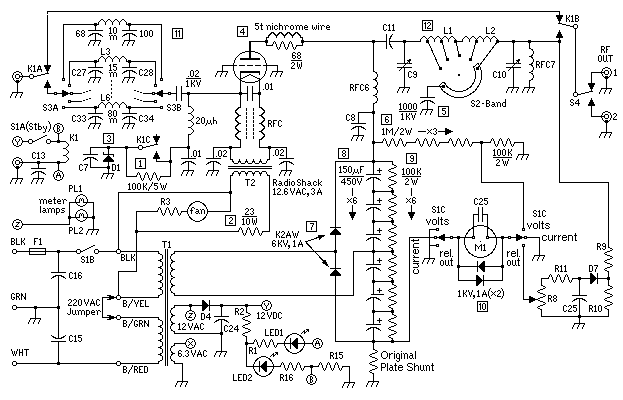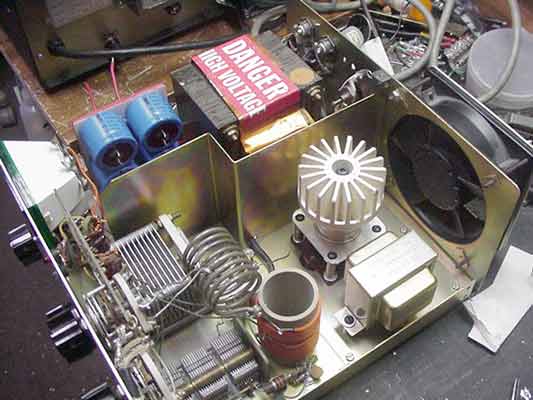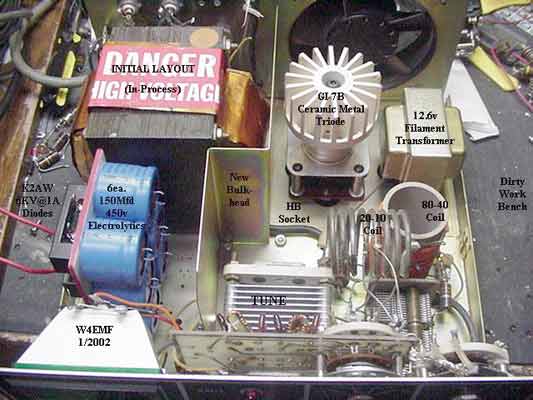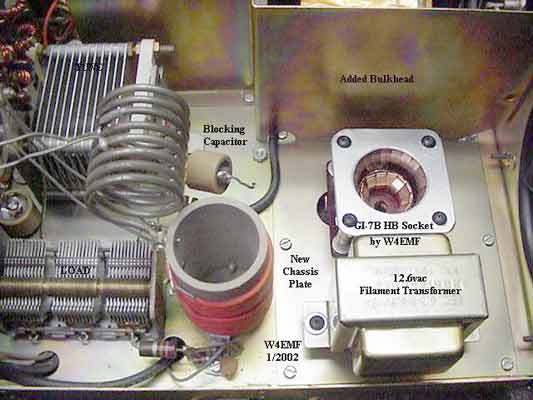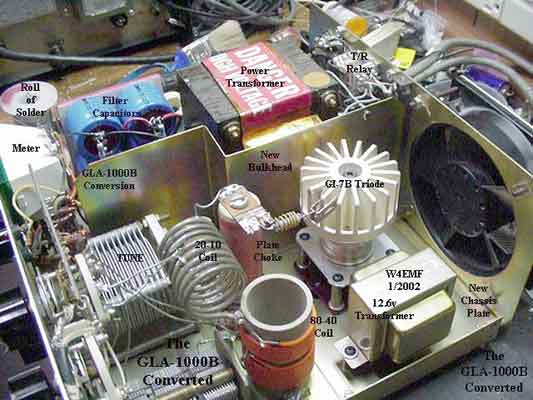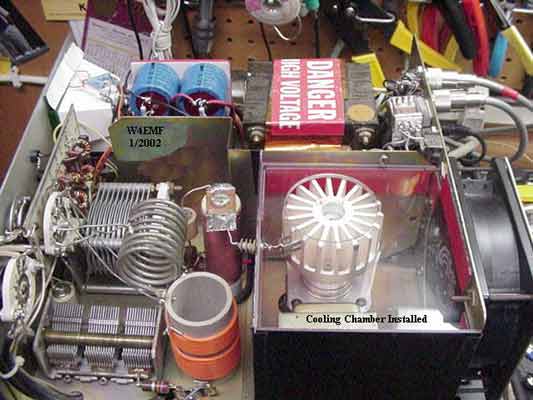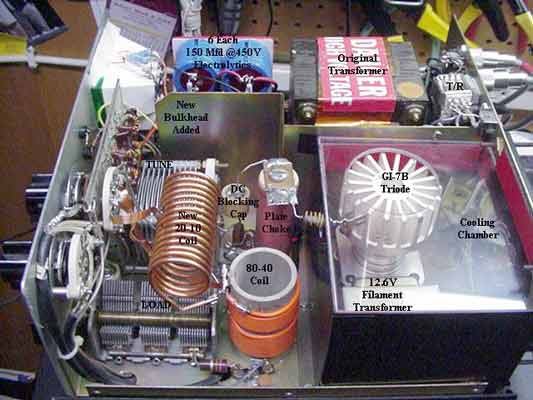|
GI-7B in a GLA-1000 by W4EMF Click on callsign for e-mail |
|
Scroll down to see pictures and narrative describing GLA-1000 converted to use the Russian GI-7B triode, below the schematic diagram and notes. |
|
|
|
|
|
Notes from the schematic diagram
|
|

|
100KW, 2W resistor added to cut off plate current in standby.
|

|
23W, 10W wire wound resistor added to bring filament voltage to proper 12.6V.
|

|
Orignal zener used for operating bias. It will not survive long, key-down tune ups!
|

|
No parasitic oscillation instability noted on any band.
|

|
1000 pF substituted for original 200pF to pad load capacitor on 80M.
|

|
Three 1 MW, 2W resistors added to HV metering to make meter read 3KV, full scale.
|

|
Two K2AW (6KV @ 1A) diode modules were used for voltage doubler circuit rectifiers.
|

|
Six 150uF, 450VDC Electrolytic Capacitors used for doubler circuit filter.
|

|
Six 100KW, 2W flame-proof resistors across capacitors for equalization and bleeders.
|

|
Two 1KV, 1A "back-to-back" diodes added across meter to protect it.
|

|
10M tuned input circuit added to input PC board; see notes, below.
|

|
20-15-10M output coil (L1) lengthened and retapped; see photo and narrative.
|

|
A plexiglass box was built around tube with opening directly above tube. Cooling is quite
sufficient with this system.
|

|
The original operating bias circuit will smoke if long "key-down" tune-ups are done. Use
a pulser (e.g., keyer set for continuous dits) and no problem should be experienced.
|

|
The new output inductor is the same diameter and wire size as the original unit. The length
is longer (see narrative, below).
|

|
The 10 meter input inductor is 8 turns of #24 enameled wire .250" inside diameter. Turns
are spread and/or compressed to attain best input SWR. No toriod was used.
|

|
T/R relay K1 was changed to a smaller and faster 3PDT unit with a 12VDC coil, the added
contacts used to cut-off the tube during standby (see narrative, below).
|

|
Filament choke is bifilar-wound #19AWG wire filling a 4" x 3/8" Amidon ferrite rod (#43
mix). Wind on 3/8" dowel, transfer to rod to prevent breakage. Cover with heatshrink.
|

|
Typically, 60W drive should yield around 600W out with PA tuned for maximum output and should
run cool under normal use.
|
|
The GLA-1000 series of amplifiers were good small amps but to often suffered at the hands
of those operating them. They were not without problems as received thus compounding the
grief of many owners. My amplifier was acquired inoperative and minus tubes. It had the
general repairs found in most of these units. The diodes and filter capacitors had been
replaced and were flopping around in their designated area. My intention was to modify
this amplifier to utilize the Russian GI-7B ceramic metal triode. The B+ voltage was too
low for the GI-7 so the first portion of the project was to build a voltage double circuit.
The unit originally used a full wave bridge circuit generating around 1150 volts no load.
The new supply completed delivers 2275 volts no load and has 25 Mfd @ 2700 volts of filtering.
Six 150 Mfd @ 450volt electrolytic capacitors are paralleled with 100K ohm resistors for
equalization and wired in series.
|
go to the top
